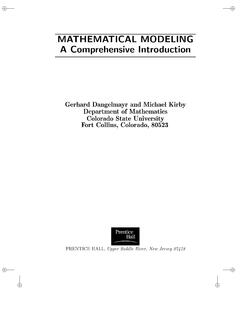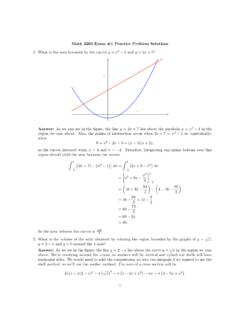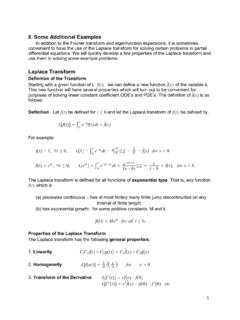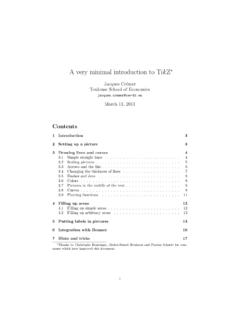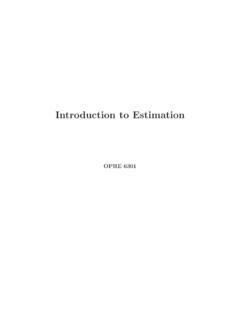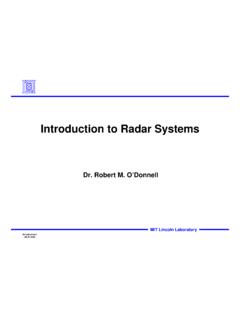Transcription of Renzo’s Math 490 Introduction to Topology
1 Renzo sMath490 Introduction to TopologyTom BabinecChris BestMichael BlissNikolai BrendlerEric FuAdriane FungTyler KleinAlex LarsonTopcue LeeJohn MadonnaJoel MousseauNick PosavetzMatt RosenbergDanielle RogersAndrew SardoneJustin ShalerSmrithi SrinivasanPete TroyanJackson YimElizabeth UibleDerek Van FarowePaige WarmkerZheng WuNina ZhangWinter 2007 Mathematics 490 Introduction to TopologyWinter 20072 Contents1 Metric Spaces .. Open Sets (in a metric space) .. Closed Sets (in a metric space) .. Topological Spaces .. Closed Sets (Revisited) .. Continuity .. Homeomorphisms .. Homeomorphism Examples .. Theorems On Homeomorphism .. Homeomorphisms Between Letters of Alphabet .. Topological Invariants .. Vertices .. Holes .. Classification of Letters .. The curious case of the Q .. Topological Invariants.
2 Hausdorff Property .. Compactness Property .. Connectedness and Path Connectedness Properties .. 252 Making New Spaces From Cartesian Products of Spaces .. The Product Topology .. Properties of Product Spaces .. 293 Mathematics 490 Introduction to TopologyWinter Identification Spaces .. Group Actions and Quotient Spaces .. 343 First Topological Introduction .. Compactness .. Preliminary Ideas .. The Notion of Compactness .. Some Theorems on Compactness .. Hausdorff Spaces .. Compactification .. Motivation .. One-Point Compactification .. Theorems .. Examples .. Connectedness .. Introduction .. Connectedness .. Path-Connectedness .. 614 Surfaces .. The Projective Plane .. lines inR3or a sphere with antipodal points identified.. The Projective Plane as a Quotient Space of the Sphere.
3 The Projective Plane as an identification space of a disc .. Non-Orientability of the Projective Plane .. Polygons .. Bigons .. Rectangles .. Working with and simplifying polygons .. Orientability .. Definition .. 764 Mathematics 490 Introduction to TopologyWinter Applications To Common Surfaces .. Conclusion .. Euler Characteristic .. Requirements .. Computation .. Usefulness .. Use in identification polygons .. Connected Sums .. Definition .. Well-definedness .. Examples .. #T=RP2#RP2#RP2.. Associativity .. Effect on Euler Characteristic .. Classification Theorem .. Equivalent definitions .. Proof .. 935 Homotopy and the Fundamental Homotopy of functions .. The Fundamental Group .. Free Groups .. Graphic Representation of Free Group.
4 Presentation Of A Group .. The Fundamental Group .. Homotopy Equivalence between Spaces .. Homeomorphism vs. Homotopy Equivalence .. Equivalence Relation .. On the usefulness of Homotopy Equivalence .. Simple-Connectedness and Contractible spaces .. Retractions .. Examples of Retractions .. 1085 Mathematics 490 Introduction to TopologyWinter Computing the Fundamental Groups of Surfaces: The Seifert-Van Kampen The-orem .. Examples: .. Covering Spaces .. Lifting .. 1176 Mathematics 490 Introduction to TopologyWinter 2007 What is this?This is a collection of Topology notes compiled by Math 490 Topology students at the Universityof Michigan in the Winter 2007 semester. Introductory topics of point-set and algebraic topologyare covered in a series of five (for the random person stumbling upon this document)What you are looking at, my random reader, is not a Topology textbook.
5 It is not the lecturenotes of my Topology class either, but rather my student s free interpretation of it. Well, Ishould use the word free with a little bit of caution, since they *had to* do this as their finalproject. These notes are organized and reflect tastes and choices of my students. I have doneonly a minimal amount of editing, to give a certain unity to the manuscript and to scrap outsome mistakes - and so I don t claim merits for this work but to have lead my already greatstudents through this semester long adventure discovering a little bit of (for my students)Well, guys, here it is! You ve done it all, and here is a semester worth of labor, studying, buthopefully fun as well. I hope every once in a while you might enjoy flipping through the pagesof this book and reminiscing that in half a century or so you might be tellingexaggerated stories to your grandchildren about this great thank to you all for a very good semester!
6 7 Mathematics 490 Introduction to TopologyWinter 20078 Chapter 1 TopologyTo understand what a topological space is, there are a number of definitions and issues that weneed to address first. Namely, we will discuss metric spaces, open sets, and closed sets. Oncewe have an idea of these terms, we will have the vocabulary to define a Topology . The definitionof Topology will also give us a more generalized notion of the meaning of open and closed Metric SpacesDefinition spaceis a setXwhere we have a notion of distance. That is, ifx, y X, thend(x, y)is the distance betweenxandy. The particular distance function mustsatisfy the following (x, y) 0for allx, y (x, y) = 0if and only ifx= (x, y)=d(y, x) (x, z) d(x, y) +d(y, z)To understand this concept, it is helpful to consider a few examples of what does and does notconstitute a distance function for a metric any spaceX, letd(x, y) = 0ifx=yandd(x, y) = metric, called thediscrete metric, satisfies the conditions one through Pythagorean Theorem gives the most familiar notion of distance for pointsinRn.
7 In particular, when givenx= (x1, x2, .., xn)andy= (y1, y2, .., yn), the distance f asd(x, y) = n i=1(xi yi)29 Mathematics 490 Introduction to TopologyWinter 2007 Example functions in a spaceX={f: [0,1] R}. Doesd(f, g) =max|f g|define a metric?Again, in order to check thatd(f, g) is a metric, we must check that this function satisfies theabove criteria. But in this case property number 2 does not hold, as can be shown by consideringtwo arbitrary functions at any point within the interval [0,1]. If|f(x) g(x)|= 0, this doesnot imply thatf=gbecausefandgcould intersect at one, and only one, point. Therefore,d(f, g) is not a metric in the given Open Sets (in a metric space)Now that we have a notion of distance, we can define what it means to be an open set in ametric a metric space. AballBof radiusraround a pointx XisB={y X|d(x, y)< r}.We recognize that this ball encompasses all points whose distance is less subsetO Xisopenif for every pointx O, there is a ball aroundxentirely contained [0,1].
8 The interval(0,1/2)is open The interval[0,1/2)is not open an open set, we should be able to pick any point within the set, take an infinitesimal stepin any direction within our given space, and find another point within the open set. In the firstexample, we can take any point 0< x <1/2 and find a point to the left or right of it, withinthe space [0,1], that also is in the open set [0,1). However, this cannot be done with the secondexample. For instance, if we take the point within the set [0,1), say 0, and take an infinitesimalstep to the left while staying within our given spaceX, we are no longer within the set [0,1).Therefore, this would not be an open set a set is not open,this does not imply that it is closed. Furthermore, there exists setsthat are neither open, nor closed, and sets that are open and , open sets in spacesXhave the following properties:1.]]]]
9 The empty set is open2. The whole spaceXis open3. The union of any collection of open sets is open4. The intersection of anyfinitenumber of open sets is 490 Introduction to TopologyWinter Closed Sets (in a metric space)While we can and will define a closed sets by using the definition of open sets, we first define itusing the notion of a limit pointzis alimit pointfor a setAif every open setUcontainingzintersectsAin a point other , the pointzcould be inAor it might not be inA. The following example will help makethis the open unit diskD={(x, y) :x2+y2<1}. Any point inDis alimit point ofD. Take(0,0)inD. Any open setUabout this point will contain other pointsinD. Now consider(1,0), which is not inD. This is still a limit point because any open setabout(1,0)will intersect the following theorem and examples will give us a useful way to define closed sets, and will alsoprove to be very helpful when proving that sets are open as setCis aclosedset if and only if it contains all of its limit unit disk in the previous example is not closed because it does not containall of its limit points; namely,(1,0).
10 Example , a subset ofR. This is a closed set because it does contain all ofits limit points; no point is a limit point! A set that has no limit points is closed, by default,because it contains all of its limit intersection of closed sets is closed, and every finite union of closed sets is Topological SpacesWe now consider a more general case of spaceswithoutmetrics, where we can still make senseof (or rather define appropriately) the notions of open and closed sets. These spaces are calledtopological spaceis a pair(X, )whereXis a set and is a set ofsubsets ofXsatisfying certain axioms. is called a this is not particularly enlightening, we must clarify what a Topology on a setXconsists of subsets ofXsatisfying the followingproperties:1. The empty set and the spaceXare both sets in the The union of any collection of sets in is contained in.
